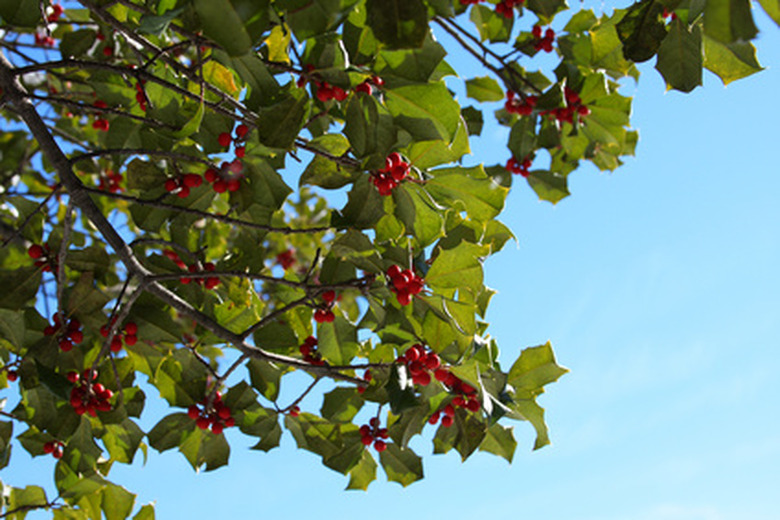How To Save A Dying Holly Tree
Things Needed
- Insecticide
- Fertilizer
Hollies add charm and beauty to a landscape as well as charm to the holidays. Growing to a height of 50 feet, these shrubs make excellent property borders. Hollies are usually a hardy plant but are susceptible to chlorosis, yellow of the leaves and insect damage. This along with dry conditions can lead to health problems for a holly bush. Regular inspection of the bush will alert you to problems early, leading to a high survival rate.
Step 1
Keep the soil moist around the holly bush. Regular watering during the summer months will aid in maintaining a healthy bush. Young holly bushes need special attention to watering, as they do not tolerate dry conditions well. Allow the soil 1 inch below the surface to dry between watering.
- Hollies add charm and beauty to a landscape as well as charm to the holidays.
- Young holly bushes need special attention to watering, as they do not tolerate dry conditions well.
Step 2
Remove insects from the bush. Scales, beetles with a shell and leaf miners are most common on holly bushes. Leaf miners will tunnel through the leaf, leaving eggs in their path. Scales eat holes in the leaves and such the nutrients from the greenery. Prune the existing infected leaves from the bush with pruning shears. Remove all leaves with signs of insect infestation. Apply an insecticide soap containing carbaryl to the leaves. The carbaryl will rid the bush of both scales insects and leaf miners. Apply the insecticide according to the label directions.
- Remove insects from the bush.
- Apply an insecticide soap containing carbaryl to the leaves.
Step 3
Treat chlorosis, or leaf yellowing, by adjusting the pH in the soil. Holly bushes prefer a soil pH of 4.0 to 6.0 to yield the best overall health. A more or less acidic soil will turn the leaves of the bush yellow. Apply a water-soluble fertilizer with a 10-5-5 nutrient formula to the entire area according to the label directions. If the leaves continue to yellow, perform a soil test. Remove a portion of soil from the area near the bush's base. Have the soil analyzed by the local extension service. Add sand to lower the pH of the soil or apply a 10-5-5 fertilizer to increase the pH, based on the test results.
- Treat chlorosis, or leaf yellowing, by adjusting the pH in the soil.
- Add sand to lower the pH of the soil or apply a 10-5-5 fertilizer to increase the pH, based on the test results.
